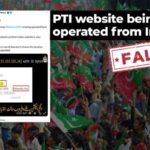The Monetary Policy Committee of the State Bank of Pakistan (SBP) declared on Monday that the status quo would be maintained, with the key policy rate remaining at 22%.
For the fifth consecutive time, the MPC has decided to keep the key policy rate steady, which is in line with market expectations given that high inflation is still expected due to rising energy prices.
SBP Governor Jameel Ahmad gave a troubling update at a press conference in Karachi, saying that inflation is still high and that the annual objective should be revised upward to 23-25%.
Before the nation’s general election the following month, this decision to maintain the status quo on rates is the final made by the interim administration. It also occurs in the middle of Pakistan and the International Monetary Fund’s $3 billion Standby Arrangement (SBA) (IMF).
The governor of the bank stated that “elevated” inflation was the reason for the decision, but the rate in January was predicted to decline from 29.7% in the previous month.
It predicted that starting in March, inflation will decrease more quickly, with an average annual inflation rate of 23-25%.
Tahir Abbas, head of research at Arif Habib Limited, stated that “SBP chose a wait and see approach during this policy (meeting) and refrained from abruptly starting a monetary easing cycle.”
“Economic indicators are gradually improving and inflation is expected to decline significantly from March 2024 onwards, where we believe that (the) SBP is expected to start a monetary easing cycle,” he stated.
The nation’s foreign exchange reserves and external accounts have both improved, the current account deficit is predicted to decrease, and although inflation is still high, it will begin to decline more quickly in March, according to Ahmad.
In June, Pakistan increased its main interest rate to an unprecedented 22 percent in an effort to combat ongoing inflationary pressures and to fulfill an IMF requirement in order to receive the bailout.
The rescue program has prevented a sovereign debt default, but it came with conditions that complicated efforts to control inflation and negatively impacted business confidence. These conditions included raising the program’s benchmark interest rate, increasing government revenue, and raising the price of electricity and natural gas.
The business community had been asking for a rate drop to provide some relief from the economic woes in spite of negative real rates.







